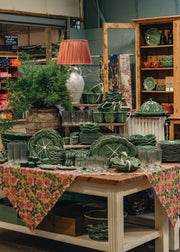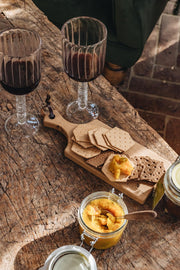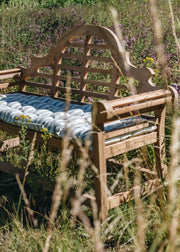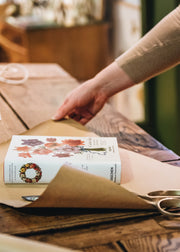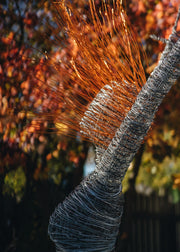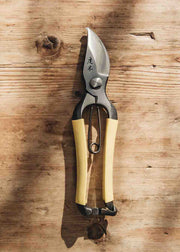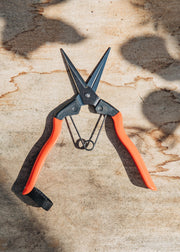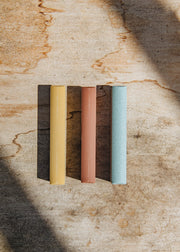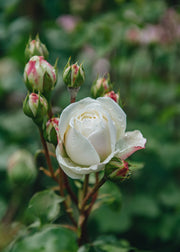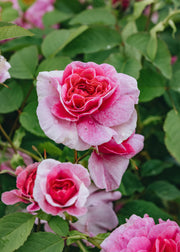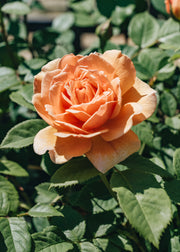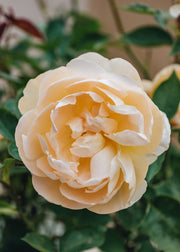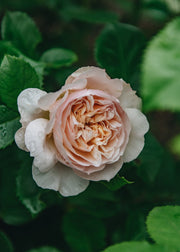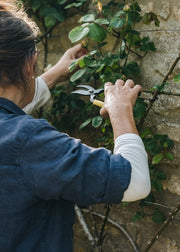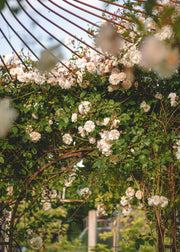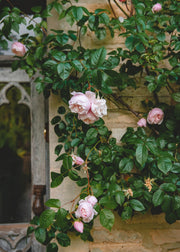How To: Prune Shrub Roses

Pruning is important. Left to their own devices roses will grow too large and become leggy. Approaching a rose with secateurs, at the right time will encourage a good shape and abundant flowers the following season. It is worth remembering not to be scared to cut back roses, they are tough and thrive on a decisive approach. A pruned rose - reduced and devoid of leaves - can look alarmingly bare, but the result will be extremely rewarding. To avoid the risk of spore-borne disease, always clear up behind you as you work and dispose of the unwanted rose material in a green recycling bin, not in your own compost.
Before you start to prune, clean your blades with disinfectant to avoid inadvertently transferring disease.
Tools for Pruning Roses
Deadheading is the simplest type of pruning and should be carried out throughout the summer on shrub roses and climbers. Removing spent blooms will stop the formation of rose hips which would take energy away from the rose and lessen the production of further blooms. (This does not apply, however, if it is a variety grown for attractive hips such as Rosa rugosa).
Snip off each fading flower immediately above the nearest side shoot. If it is a multiple bunch of flowers, remove only the spent bloom at the end of its stalk and only cut back to the first shoot on the main stem once all the blooms are spent. Clear up all the dead heads and dispose of them in a recycling green bin, not in your compost.
Any additional cutting back between the summer deadheading and the late winter prune should be limited, but if there are any particularly long branches in a shrub rose that might catch in the wind and cause root rock (when the roots are damagingly loosened), it is advisable to reduce them to the height of the rest of the shrub.

Deadheading Spent Blooms

Rosehips on Rosa Rugosa
It is hard to define exactly when to prune, depending on the severity of the winter, but it should be done at a point when the rose is showing the first signs of growth, normally in January or February; renowned breeder David Austin suggests you should have finished pruning by March. This is also a good time to fertilise the plant and put a mulch of compost around the base of the rose.
In your rose's first year:
A newly planted shrub rose will need little intervention in its first year because it is concentrating on creating an efficient root system.
- Prune the stems back by 8-12cm (3-5in)
- Cut out any dead, diseased or damaged wood, as well as any crossing or weak stems
- Remove any remaining foliage and place it with all the bits of pruning in recycling

Cutting back dead wood with loppers

Cutting back stems with secateurs
In its second year:
- Cut all stems back by a third
- Cut out any dead, diseased or damaged wood, as well as any crossing or weak stems
- Remove any remaining foliage and place it with all the bits of pruning in recycling
In its third year, and each year following:
The rose will now be established so you can decide on the size you wish it to be (tall, medium or small), depending on variety and site, and prune it accordingly.
- Make a gauge of the size you want using a piece of bamboo which can be stuck into the ground by the base of the rose to act as a guide so that each stem can be cut to the same height
- Cut out any dead, diseased or damaged wood, as well as any crossing or weak stems
- Remove any remaining foliage and place it with all the bits of pruning in recycling

Removing dead wood with a saw




